Posts Tagged: Salvia
Valley Carpenter Bees: Drama in the Garden
Some folks call them "bumble bees," but they're not. In size, the female Valley carpenter bee (Xylocopa varipuncta) resembles a bumble bee, but...
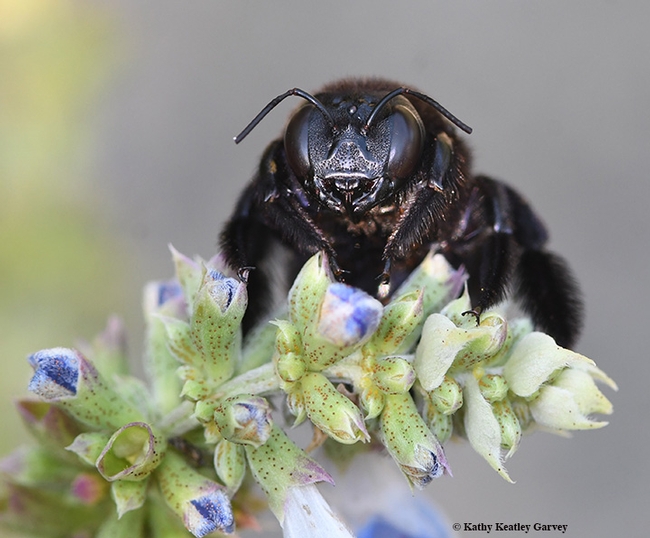
Don't bug me, I'm trying to wake up. This female Valley carpenter bee, Xylocopa varipuncta, peers over a blue spike salvia (Salvia uliginosa) blossom. (Photo by Kathy Keatley Garvey)
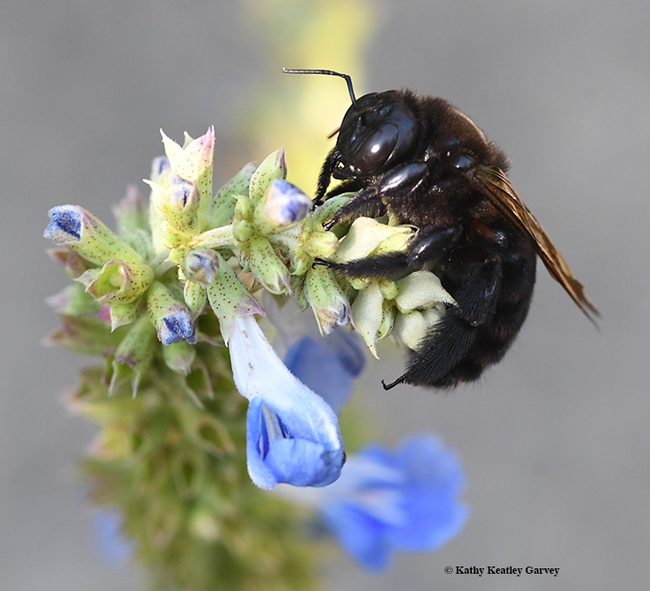
The female Valley carpenter bee sips nectar from a blue spike salvia, Salvia uliginosa. (Photo by Kathy Keatley Garvey)
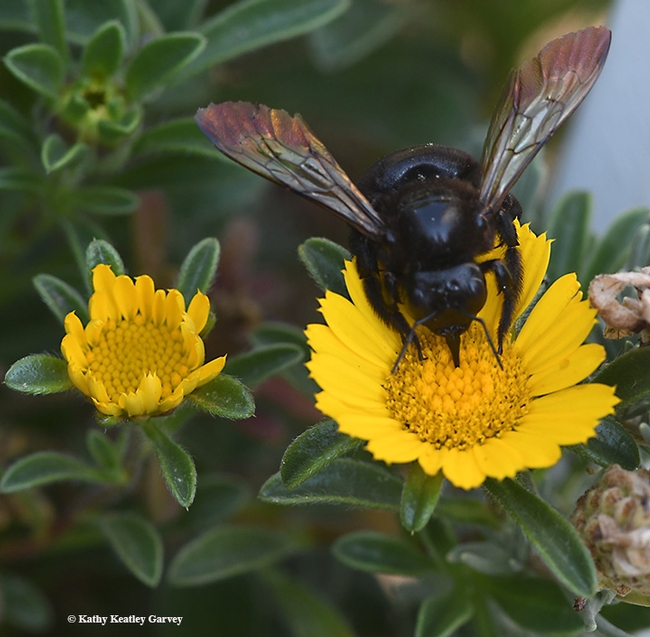
The metallic wings of the female Valley carpenter bee gleam in the sun as she sips nectar from gold coin, Asteriscus maritimus. (Photo by Kathy Keatley Garvey)
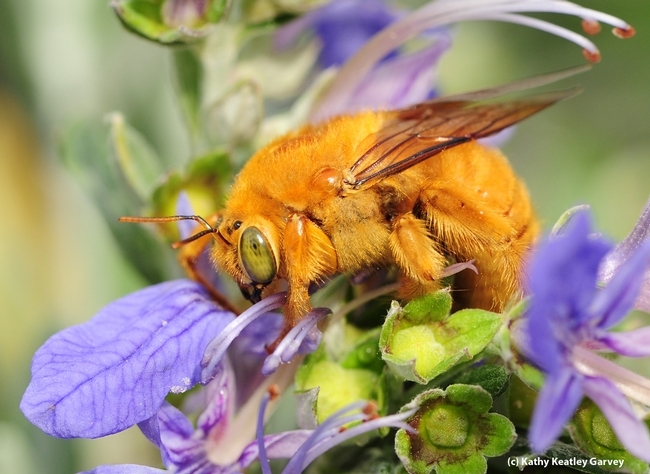
This is the male Valley carpenter, Xylocopa varipuncta, bee on germander. (Photo by Kathy Keatley Garvey)
Bee-Hold, The Eye of the Bee-Holder
Bee-hold, the eye of a bee-holder. When you have a "Bee Crossing" sign in your pollinator garden, odds are that bees will cross right in front of...
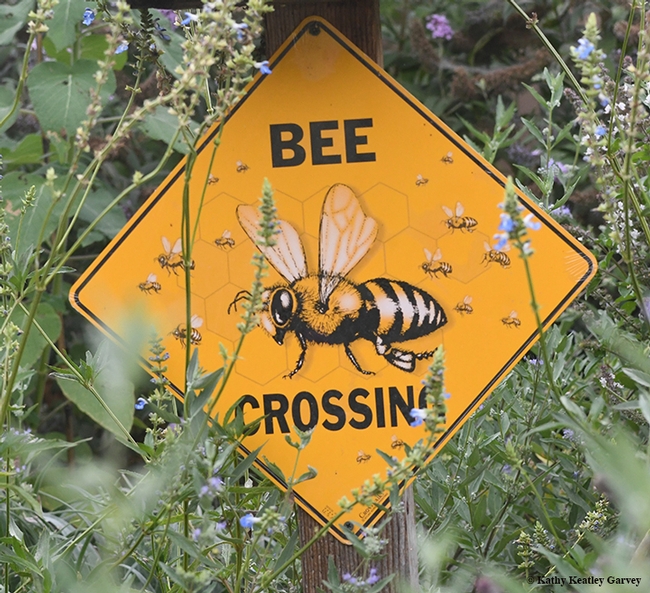
"Bee Crossing" signs are favorites in pollinator gardens, not for the bees, but for the humans. (Photo by Kathy Keatley Garvey)
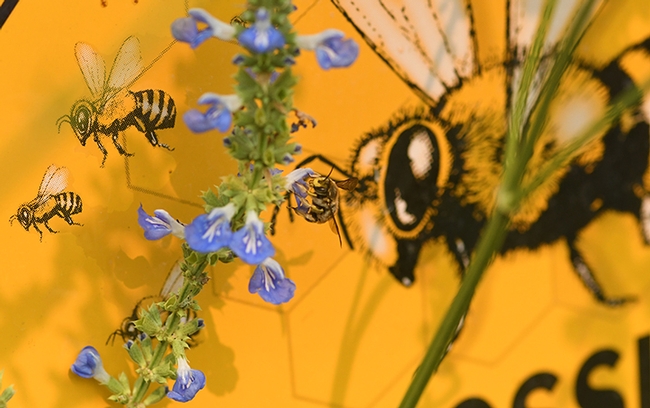
Sign of the times: A European wool carder bees (Anthidium manicatum) is surrounded by honey bees on the "Bee Crossing" sign. (Photo by Kathy Keatley Garvey)
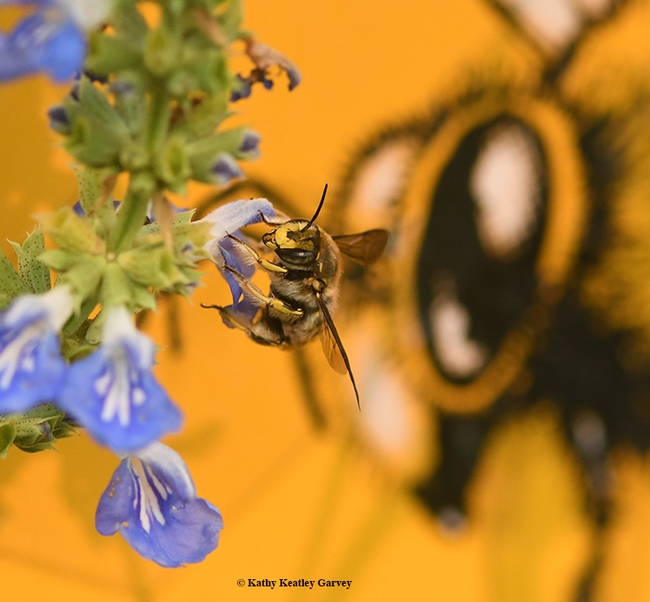
Close-up of European wool carder bee nectaring on a blue spike salvia. The eye of a honey bee adds to this photo. (Photo by Kathy Keatley Garvey)
This Bully Bee Goes for the Blue Plate Special
It's a bully. But what a bully! Ever seen the male European wool carder bee (Anthidium manicatum) protecting its turf? It's "no-holds barred" on...
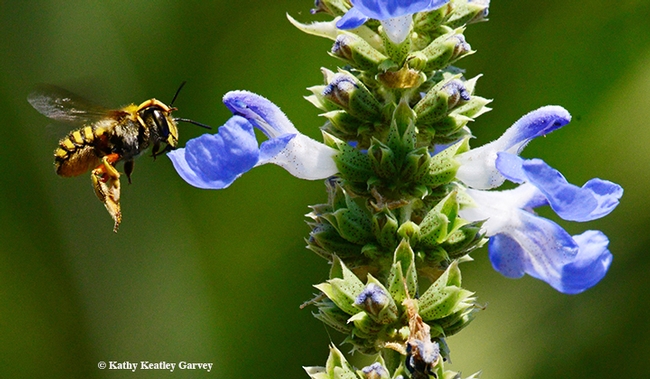
European wool carder bee, Anthidium manicatum, heads toward a blue spike sage, Salvia uliginosa. (Photo by Kathy Keatley Garvey)
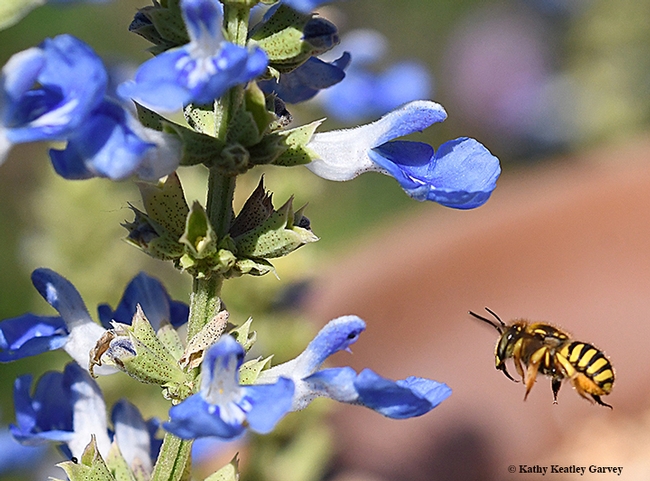
The European wool carder bee, an Old World bee, seems to prefer blue flowers with a long throat. This is blue spike sage, Salvia uliginosa, a native of Brazil. (Photo by Kathy Keatley Garvey)
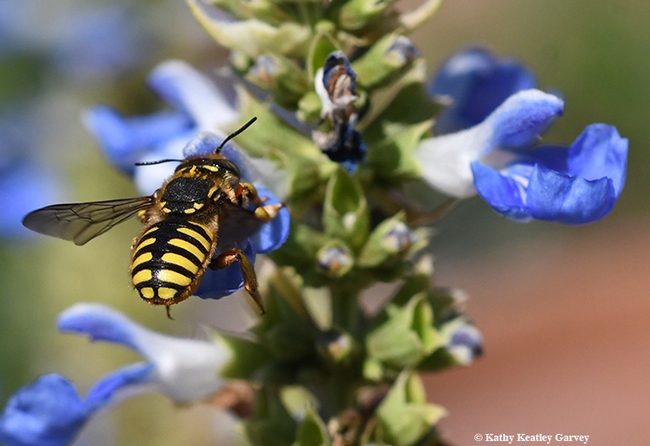
Two European wool carder bees in the process of giving the world more wool carder bees. (Photo by Kathy Keatley Garvey)
They Hop and They Suck!
You've seen them. You've seen them hop. They're aptly named. Leafhoppers are tiny insects (family Cicadellidae) that suck nutrients from...
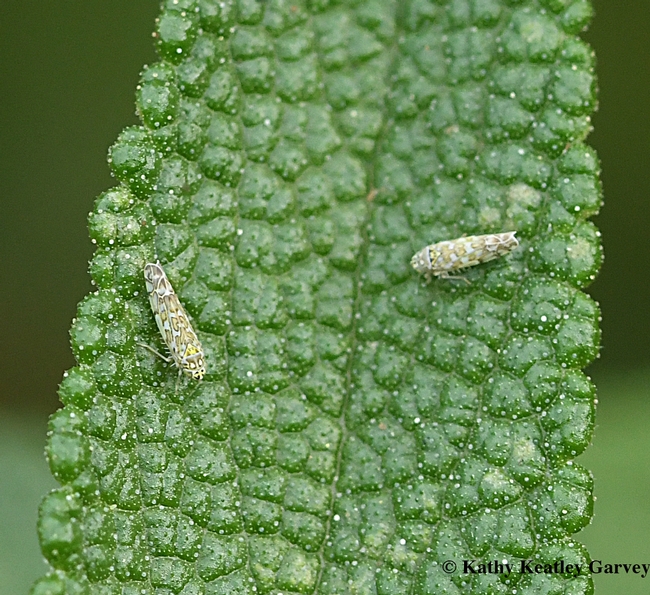
Two leafhoppers sharing a black sage leaf in Vacaville, Calif. They are Typhlocybinae leafhoppers, Eupteryx decemnotata, according to Robert Lord Zimlich of BugGuide.Net. (Photo by Kathy Keatley Garvey)
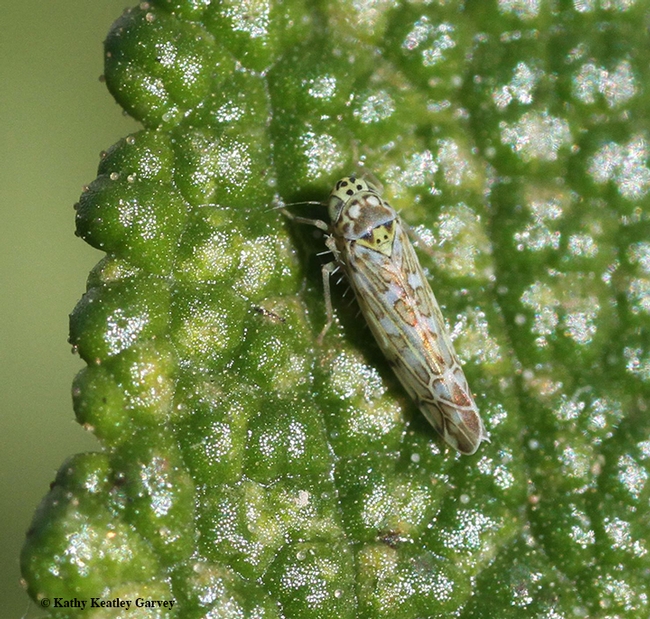
"Leafhoppers generally are varying shades of green, yellow, or brown, and often mottled," according to the UC Statewide Integrated Pest Management Program. This one is a Eupteryx decemnotata on black sage (Salvia mellifera) in Vacaville, Calif. (Photo by Kathy Keatley Garvey)
A Reason Why Bumble Bee Population Is Declining
The news is disturbing but not unexpected. Scientists are linking global climate change to one reason why the worldwide population of bumble bees is...
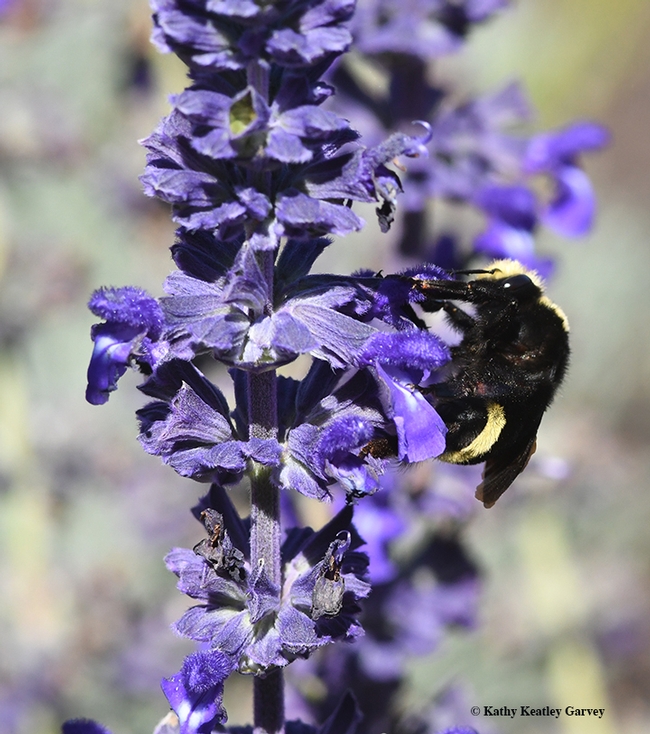
A yellow-faced bumble bee, Bombus vosnesenskii, nectaring on Salvia 'Indigo Spires' in Kate Frey's pollinator garden at the Sonoma Cornerstone. (Photo by Kathy Keatley Garvey)
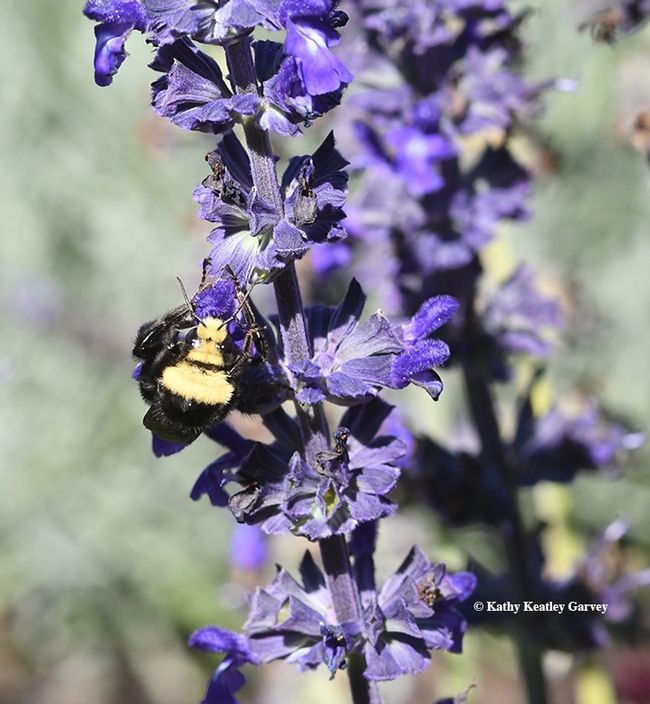
Hungry bumble bee, a queen Bombus vosnesenskii, can't get enough of the nectar from the salvia. (Photo by Kathy Keatley Garvey)
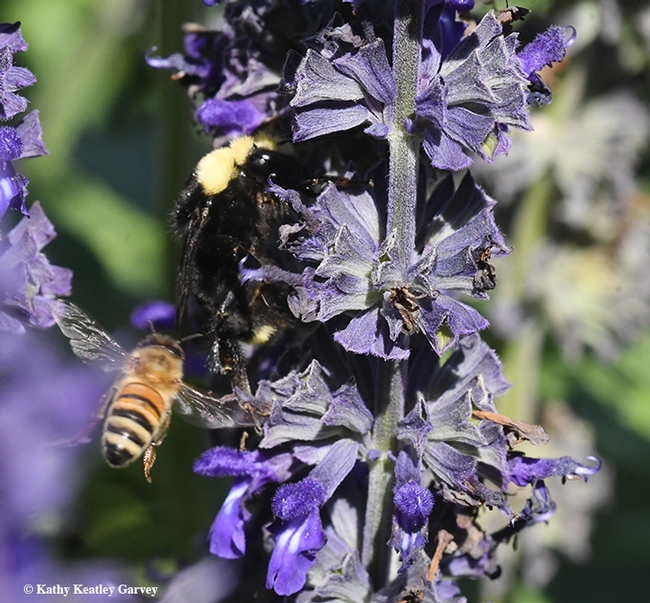
Honey bee heads for the same plant, Salvia 'Indigo Spires,' in Kate Frey's pollinator gardener at the Sonoma Cornerstone. (Photo by Kathy Keatley Garvey)
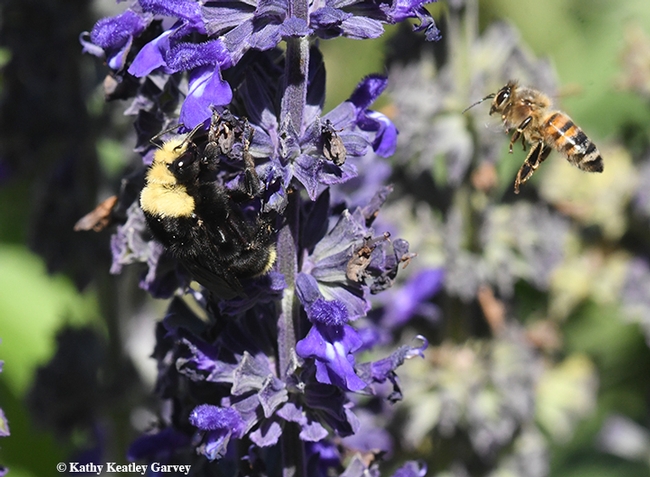
Me, too! Another another bee wants a share of the food--the sweet nectar from Salvia 'Indigo Spires.' (Photo by Kathy Keatley Garvey)

